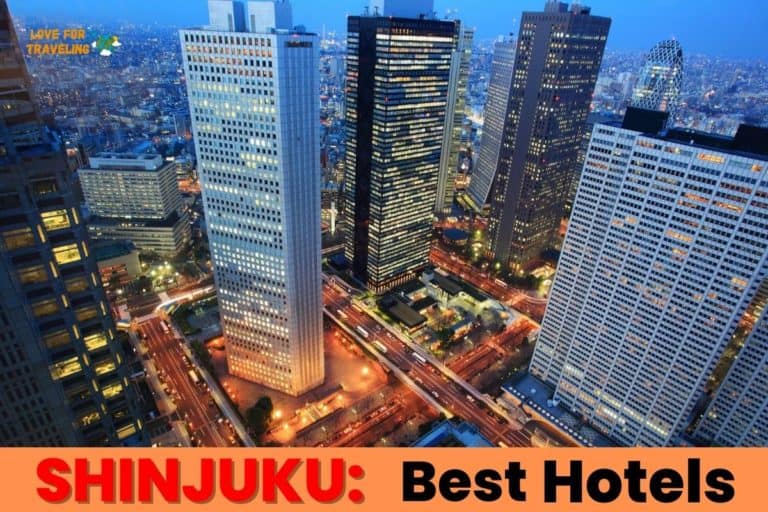What Is the History of Arashiyama Bamboo Forest?
Imagine stepping into a lush forest where towering bamboo stalks reach toward the sky, creating a mesmerizing canopy of green.
Arashiyama Bamboo Forest in Kyoto, Japan, holds a rich and captivating history waiting to be explored. From its geographical location to its significance in Japanese culture, this article delves into the fascinating story behind this natural wonder.
Journey through time and discover the secrets within the serene beauty of Arashiyama Bamboo Forest.
Key Takeaways
- Arashiyama Bamboo Forest is located in Kyoto, Japan, and dates back to the Heian period.
- Bamboo symbolizes resilience and adaptability, and the forest provides a habitat for various wildlife species.
- Bamboo cultivation has economic and cultural importance, supporting the Japanese economy and local communities.
- The forest is a popular tourist attraction, with Tenryuji Temple and its Zen gardens being significant to visitors.
Geographical Location of Arashiyama Bamboo Forest in Kyoto, Japan
You can find the Arashiyama Bamboo Forest in Kyoto, Japan. Located on the western outskirts of the city, it’s easily accessible and a popular destination for both locals and tourists.
The forest is in the Arashiyama district, known for its scenic beauty and historic sites. Surrounded by mountains and along the Hozu River, the area offers a tranquil and picturesque setting.
The bamboo forest covers an expansive area, with tall bamboo stalks creating a mesmerizing canopy overhead. Walking through the woods, you can feel a sense of freedom and connection with nature.
The rustling sound of the bamboo leaves and the filtered sunlight create a serene atmosphere, making it a perfect escape from the hustle and bustle of city life.
Significance of Tenryuji Temple to Tourists
When visiting Tenryuji Temple, you’ll be captivated by its architectural beauty, elegant wooden structures, and intricate details.
The temple’s Zen gardens, with carefully raked gravel and meticulously placed rocks, provide a sense of tranquility and peace.
As a tourist, you’ll find Tenryuji Temple a significant destination offering a unique blend of historical significance, natural beauty, and a serene atmosphere.
Tenryuji’s Architectural Beauty
Take a moment to appreciate Tenryuji’s architectural beauty while visiting Arashiyama. This historic temple, founded in 1339, is renowned for its stunning design and serene atmosphere.
The temple’s architecture reflects the Zen Buddhist principles of simplicity and harmony with nature. As you explore the temple grounds, you will be captivated by the elegant wooden structures and meticulously manicured gardens.
The main hall, designated National Treasure of Japan, showcases exquisite craftsmanship and intricate details. The temple’s layout is carefully planned to create a sense of tranquility, allowing visitors to experience a deep connection with nature.
The table below highlights some key features of Tenryuji’s architecture, inviting you to appreciate its beauty further.
| Feature | Description |
|---|---|
| Main Hall | A National Treasure of Japan, known for its architectural beauty and historical significance. |
| Zen Garden | A meticulously designed garden that reflects the Zen philosophy of simplicity and tranquility. |
| Dragon Ceiling | A stunning ceiling painting of a dragon symbolizing power and protection. |
| Wooden Pillars | The temple’s wooden pillars showcase exquisite craftsmanship and enhance its overall beauty. |
Zen Gardens and Tranquility
Immerse yourself in the tranquility of Tenryuji Temple’s Zen garden, where the meticulously designed landscaping creates a sense of peace and harmony. As you wander through the garden, taking in the sights and sounds of the flowing water and perfectly placed rocks, you can’t help but feel a sense of calm wash over you.
The Zen garden reflects the principles of Zen Buddhism, emphasizing simplicity, mindfulness, and the connection between nature and the human spirit. It serves as a reminder to slow down, breathe, and find inner peace amid a busy world.
The carefully raked gravel symbolizes the ebb and flow of life, reminding us of the impermanence of all things. The strategically placed rocks represent mountains and islands, inviting contemplation and reflection.
The lush greenery and carefully chosen plants create a harmonious balance, reminding us of the interconnectedness of all living things.
In this garden, you can let go of your worries and find solace in the present moment. Take a moment to sit on one of the stone benches, close your eyes, and let the serenity of the Zen garden envelop you.
Historical Context of Bamboo Shoot Cultivation
Bamboo shoot cultivation has a rich historical context that dates back centuries. Bamboo cultivation started in China during the Zhou Dynasty and gradually spread to other parts of Asia.
Bamboo holds great cultural significance in many Asian countries, symbolizing strength, flexibility, and purity.
Over time, bamboo farming techniques evolved, leading to the development of sustainable farming practices that ensure the preservation of this valuable resource.
Origins of Bamboo Cultivation
You’ll be surprised to learn that over 5,000 years ago, humans began cultivating bamboo shoots for various purposes. This versatile plant has a rich history and has been used in numerous ways throughout the centuries.
- Bamboo has been used as a building material, creating sturdy structures that withstand the test of time.
- It has been utilized for crafting tools and weapons, showcasing its strength and durability.
- Bamboo has also played a significant role in art and culture, with its elegant and graceful appearance inspiring artists and designers alike.
The cultivation of bamboo showcases the ingenuity and resourcefulness of humans as they recognize the countless benefits this plant offers. From its practical uses to its aesthetic appeal, bamboo continues to be cherished and utilized in various industries.
Its history reminds us of our ability to adapt and harness the natural resources around us, embracing the freedom to explore and create.
Cultural Significance of Bamboo
Explore the deep-rooted association between bamboo’s cultural significance and its cultivation’s historical context, as it has shaped societies and traditions for centuries.
Bamboo is unique in various cultures worldwide, symbolizing strength, flexibility, and resilience.
In Asian cultures, bamboo is deeply intertwined with daily life, art, and spirituality. It has been used for centuries as a building material, creating sturdy structures that withstand the test of time.
The versatility of bamboo extends to its numerous practical uses, such as crafting tools, utensils, and musical instruments. Moreover, bamboo plays a significant role in traditional medicine and cuisine.
Its association with growth and fertility has led to the belief that bamboo brings good luck and prosperity.
The cultural significance of bamboo lies in its ability to adapt and thrive in diverse environments, reflecting the values of freedom and resilience societies cherish throughout history.
Evolution of Bamboo Farming
As you delve into the evolution of bamboo farming, you’ll discover the innovative techniques used in cultivating bamboo shoots throughout history. Bamboo farming has come a long way, adapting to the changing needs of society. Here are some key points to consider:
- Sustainable growth: Bamboo is known for its rapid growth and resilience, making it an environmentally friendly choice for farmers.
- Versatility: Bamboo can be used for various purposes, such as construction, textiles, and even as a food source.
- Economic impact: The cultivation of bamboo has created job opportunities and contributed to local economies.
Importance of the Meiji Period in the Forest’s History
The Meiji Period significantly transformed the Forest’s history, bringing about remarkable changes.
During this period, which lasted from 1868 to 1912, Japan underwent a rapid modernization process, and the effects were felt even in the serene Arashiyama Bamboo Forest.
The government’s push for industrialization and infrastructure development led to the construction of railways, roads, and bridges, making the forest more accessible to visitors.
This increased accessibility and the growing popularity of bamboo as a versatile material brought a surge of interest in the forest and its bamboo groves.
People began to appreciate the beauty and tranquility of the forest, leading to an influx of tourists and the establishment of tea houses and souvenir shops. The Meiji Period marked a turning point for the Forest, propelling it into becoming the iconic attraction it is today.
Current Status of Arashiyama Bamboo Forest in Terms of Historical Preservation
You should know that the current status of Arashiyama Bamboo Forest in terms of historical preservation is a subject of growing concern and requires immediate attention.
The forest, which holds significant cultural and historical value, faces threats that could damage its integrity and authenticity.
Here are some key issues that need to be addressed:
- Encroachment: The increasing number of tourists and development in the surrounding areas is putting pressure on the forest, threatening its natural habitat and disrupting its ecosystem.
- Lack of maintenance: The lack of regular maintenance and conservation efforts have deteriorated some sections of the forest, including the pathways and bamboo groves.
- Inadequate regulations: The absence of strict rules and enforcement allows unsustainable practices, such as littering and vandalism, to occur within the forest.
Immediate action must be taken to ensure the preservation and protection of Arashiyama Bamboo Forest for future generations to appreciate and enjoy its historical significance.
Now, let’s delve into a long-form response to the history of Arashiyama Bamboo Forest.
Long-Form Response to the History of Arashiyama Bamboo Forest
Take a moment to explore the rich and captivating history of Arashiyama Bamboo Forest, immersing yourself in the tales of ancient bamboo groves and their cultural significance.
The history of this enchanting forest dates back centuries, with records of its existence dating as far back as the Heian period. The lush greenery and towering bamboo stalks have served as a source of inspiration for artists, poets, and writers throughout the ages.
In addition to its aesthetic beauty, the forest holds great cultural significance, symbolizing strength, flexibility, and resilience in Japanese culture. It has become a popular destination for tourists and locals alike, providing a serene escape from the bustling city life.
As you wander through the bamboo groves, you can’t help but feel a sense of freedom and tranquility, as if transported to a different time and place.
Other Significant Historical Attractions in Kyoto
Kyoto has many other significant historical attractions, such as Kinkaku-ji and Fushimi Inari Shrine. These attractions offer a glimpse into Kyoto’s rich history and cultural heritage.
- Kinkaku-ji: Also known as the Golden Pavilion, Kinkaku-ji is a Zen Buddhist temple that dates back to the 14th century. Its stunning golden exterior reflects beautifully on the pond, creating a serene and picturesque atmosphere.
- Fushimi Inari Shrine: This iconic shrine is famous for its thousands of vibrant red torii gates that form a pathway up the sacred Mount Inari. Each gate is inscribed with a donor’s name, making it a unique and meaningful experience to walk through this spiritual tunnel.
- Gion District: Known for its traditional wooden machiya houses and geisha culture, it is a must-visit for those seeking an authentic taste of Kyoto’s past. Stroll along Hanamikoji Street, immerse yourself in the charming tea houses, and perhaps catch a glimpse of a geisha gracefully walking by.
Importance of Bamboo Cultivation in Japanese Culture
Bamboo cultivation plays a significant role in Japanese culture. It symbolizes resilience and adaptability, qualities the Japanese have long admired.
Bamboo can withstand harsh weather conditions and bend without breaking. This symbolism is deeply rooted in their culture and is often used in various aspects of Japanese life, such as architecture, art, and traditional crafts.
In Japan, bamboo forests are not only valued for their beauty but also for their practical uses. The Arashiyama Bamboo Forest in Kyoto is a prime example of this.
Thousands of tourists visit each year to experience the serene atmosphere created by the towering bamboo stalks. Walking through the forest, one can’t help but feel a sense of calm and freedom, as if transported to another world.
Furthermore, bamboo cultivation in Japan has economic significance. Bamboo produces various products, including furniture, paper, and even food. Its versatility makes it a valuable resource for industries and businesses.
Overall, the importance of bamboo cultivation in Japanese culture can’t be understated. Its symbolism of resilience and adaptability resonates deeply with the Japanese, while its practical uses contribute to their economy.
Whether admiring the beauty of bamboo forests or utilizing bamboo in everyday life, this plant holds a special place in Japanese society.
Frequently Asked Questions
What Is the Significance of the Meiji Period in the History of Arashiyama Bamboo Forest?
During the Meiji period, the significance of Arashiyama Bamboo Forest grew as it became a popular destination for tourists. Its serene beauty and towering bamboo groves captivated visitors, contributing to its reputation as a symbol of Japan’s natural splendor.
How Has the Current Status of Arashiyama Bamboo Forest Been Impacted in Terms of Historical Preservation?
The current status of Arashiyama Bamboo Forest has been impacted in terms of historical preservation through various efforts such as conservation projects and strict regulations to protect the natural environment and cultural significance of the forest.
Are There Any Other Significant Historical Attractions in Kyoto Besides Arashiyama Bamboo Forest?
Are There Any Other Significant Historical Attractions in Kyoto Besides Arashiyama Bamboo Forest?
There are many significant historical attractions in Kyoto besides Arashiyama Bamboo Forest. You can explore the beautiful temples like Kinkaku-ji and Kiyomizu-dera or visit the historic districts of Gion and Higashiyama.
What Is the Importance of Bamboo Cultivation in Japanese Culture?
Bamboo cultivation holds great importance in Japanese culture. It is deeply rooted in traditions, symbolizing strength and resilience. The versatility of bamboo is unmatched, used in various aspects of daily life, from architecture to crafts.
Can You Provide More Details About the Geographical Location of Arashiyama Bamboo Forest in Kyoto, Japan?
Arashiyama Bamboo Forest is located in Kyoto, Japan. It is a popular tourist destination known for its towering bamboo groves. The forest is in the western part of Kyoto, near the Arashiyama district.
Conclusion
In conclusion, the Arashiyama Bamboo Forest in Kyoto, Japan, isn’t just a beautiful natural wonder but a living testament to the rich history and cultural significance of bamboo cultivation in Japanese society.
Its towering bamboo groves transport visitors to a mystical and serene world, where the echoes of the Meiji Period and today’s preservation efforts combine to create a truly unforgettable experience.
A visit to this enchanting forest is like stepping into a dream.






